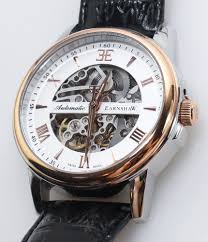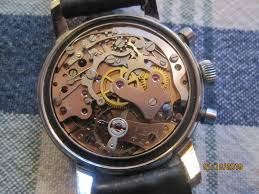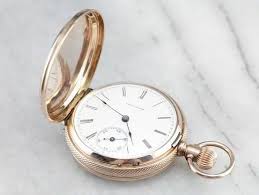








ABOUT THOMAS EARNSHAW
THOMAS EARNSHAW (1749-1829) born on the 4th of February at Ashton under Lyne, Lancashire near Manchester, England.
Thomas Earnshaw is revered as a legend and pioneer in the field of Horology. Born in Manchester, England in 1749, he was celebrated for his work in refining, and improving upon the Marine Chronometers of the era. It was those Marine Chronometers, crucial to the journeys taken by the boats in the Royal Navy as they circled the globe during a golden era in English history of science and exploration. None more so than Chronometer no. 506, carried by HMS Beagle which carried Charles Darwin on his journey around the world to inspire his breakthrough study of evolution, “On The Origin of Species”. Lauded for his work with marine chronometers, Earnshaw also embraced the challenge of developing clocks for use in Observatories such as those in Greenwich and Armagh and examples of his exquisite work can be seen in museums and auction houses around the world. It is this pioneering spirit to further the science of horology, coupled with a drive for excellence in craftsmanship that is at the heart of the Earnshaw timepiece which is available for the watch connoisseur and enthusiast alike.
He devised a modification to the detached chronometer escapement, and the compensation balance which would be used in the standard marine chronometer thereafter.
NEVIL MASKELYNE
Earnshaw was introduced to Nevil Maskelyne, the Astronomer Royal, who tested an Earnshaw chronometer for six weeks and encouraged Earnshaw to continue making them. As a result, Earnshaw received orders to repair clocks at the Greenwich Observatory and was commissioned to make a regulator for the new observatory at Armagh.
CAPTAIN WILLIAM BLIGH
Captain William Bligh purchased on behalf of the Admiralty, Earnshaw’s chronometer no. 1503 at a price of 40 Guineas for an expedition he was to comman in HMS Providence to the West Indies.
119 HIGH HOLBORN
After the passing of his mentor, William Hughes in November 1792, Earnshaw succeeded to the business at 119 High Holborn. Earnshaw then signed his work with his own name. He built chronometers to a standard plan, which led to batch production of movements by outside workers.
CAPTAIN FLINDERS
Matthew Flinders’ ship, HMS Investigator, carried two boxed Timekeepers by Earnshaw E520 and E543, at a cost of 100 Guineas each. The Investigator also carried out the first circumnavigation and mapping of the coastline of Australia. The chronometer, E520, is mounted in a wooden box with gimbals to compensate for the motion of the ship. Flinders went to shore regularly to check the settings of the chronometers against the stars. The Earnshaw chronometer Flinders refers to in his book A Voyage to Terra Australis as “this excellent timekeeper”
Earnshaw was granted an awards by the Board of Longitude for his improvements to chronometers; Earnshaw received £2500. The bimetallic compensation balance and the spring detent escapement in the forms designed by Earnshaw have been used essentially universally in marine chronometers since then, and for this reason Earnshaw is generally regarded as one of the pioneers of chronometer development.
LAST DAYS
Thomas Earnshaw retired from running the business, which he handed over to his son who continued until 1854. He passed away Died Chenies Street, Bedford Square, London on the 1st of March. A plaque in the memory of Thomas Earnshaw has been since mounted at St. Giles in the Fields.
Chronometer no. 506 was carried on HMS Beagle on a voyage to circumnavigate the globe and establish, for the first time, a chain of points around the world of accurately known longitude. The ship was commanded by Captain Robert FitzRoy, a future Vice-Admiral and founder of the Meteorological Office. This was also the voyage that carried Charles Darwin who was afterwards inspired to write his book about the theory of evolution, On the Origin of Species The chronometer is object 91 in the BBC Radio 4 series A History of the World in 100 Objects.
Blue Plaque erected by London County Council at 119 High Holborn, Camden, WC1, London to commemorate and mark out business premises of Thomas Earnshaw.
The info from
https://www.thomas-earnshaw.com/pages/about-thomas-earnshaw
Please remember that this is an unofficial account of the history of this company, Should you happen to find any mistakes with our information then please let us know at



